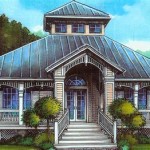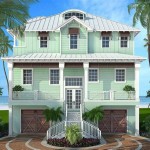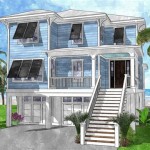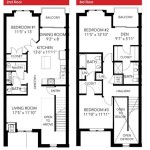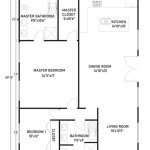House Plans With Hearth Room: The Warm Heart of Modern Home Design
House plans encompassing a hearth room represent a resurgence in prioritizing comfort, community, and the simple joys of shared spaces. The hearth room, historically associated with the kitchen fireplace and family gatherings, is being reimagined in modern home designs as a versatile and inviting area designed for relaxation and connection. This article explores the characteristics, benefits, and design considerations involved in incorporating a hearth room into a house plan, providing a comprehensive overview for those considering this valuable addition to their home.
Unlike formal living rooms, which are often reserved for special occasions, the hearth room is intended for daily use. It's a space where families can unwind, read a book, enjoy a casual meal, or simply spend time together. The defining feature, traditionally a fireplace, creates an inviting focal point that fosters a sense of warmth and intimacy. The placement of a hearth room within a house plan is crucial to its success, often positioned adjacent to the kitchen or breakfast area to facilitate seamless interaction and a cohesive living environment.
The inclusion of a hearth room in a house plan goes beyond mere aesthetics. It signifies a commitment to creating a home that prioritizes family interaction and a relaxed lifestyle. By carefully considering the design elements and placement of the hearth room, homeowners can create a truly special space that enhances the overall quality of life within their home.
The Defining Characteristics of a Hearth Room
The hearth room is distinguished from other living spaces by several key characteristics. These characteristics contribute to its unique ambiance and functionality, making it a desirable feature in modern home designs.
The Focal Point: The defining feature of a hearth room is undoubtedly the hearth itself. While traditionally a wood-burning fireplace, modern hearth rooms may feature gas fireplaces, electric fireplaces, or even wood stoves, depending on homeowner preferences and local regulations. The fireplace serves as a visual anchor for the room, drawing the eye and creating a sense of warmth and comfort. The surrounding mantel and hearth are often customized with decorative elements to reflect the homeowner's personal style.
Proximity to the Kitchen: A hallmark of a well-designed hearth room is its strategic location near the kitchen. This proximity allows for easy interaction between family members preparing meals and those relaxing in the hearth room. It facilitates casual conversation, shared activities, and a sense of connection during meal preparation. Open floor plans often seamlessly integrate the kitchen, hearth room, and breakfast area, creating a large, unified living space that is ideal for family gatherings.
Comfortable and Inviting Atmosphere: Unlike formal living rooms, hearth rooms are designed with comfort in mind. The furniture is typically plush and inviting, with comfortable sofas, armchairs, and ottomans. Soft lighting, warm colors, and natural materials contribute to a relaxed and welcoming ambiance. The use of rugs, throws, and pillows adds texture and visual interest, further enhancing the cozy atmosphere. Elements like exposed beams or brick accents can add a rustic or traditional feel, depending on the desired aesthetic.
Versatile Functionality: While the fireplace is the central element, the hearth room is designed to be a versatile space that can accommodate a variety of activities. In addition to relaxation and socializing, hearth rooms can be used for reading, playing games, watching television, or even working from home. The flexibility of the space allows it to adapt to the changing needs of the family over time. Thoughtful planning of furniture placement and storage solutions can further enhance the functionality of the hearth room.
Benefits of Incorporating a Hearth Room into a House Plan
Adding a hearth room to a house plan offers numerous benefits that extend beyond mere aesthetics. It enhances the functionality, comfort, and overall value of the home.
Enhanced Family Connection: The primary benefit of a hearth room is its ability to foster stronger family connections. The comfortable and inviting atmosphere encourages family members to spend time together, engage in conversation, and participate in shared activities. The absence of electronic distractions, often associated with formal living rooms, allows for more meaningful interactions and a deeper sense of connection.
Increased Home Value: A well-designed hearth room can significantly increase the value of a home. It is an attractive feature for potential buyers who are looking for a comfortable and functional living space. The presence of a fireplace, a key element of the hearth room, is often considered a desirable amenity. The overall appeal of a home with a hearth room can set it apart from other properties in the market.
Versatile Living Space: The hearth room is a highly versatile space that can be adapted to suit a variety of needs. It can serve as a family room, a reading nook, a home office, or a casual dining area. The flexibility of the space allows it to evolve with the changing needs of the family. This adaptability ensures that the hearth room remains a valuable and functional part of the home for years to come.
Energy Efficiency: Modern fireplaces, particularly gas and electric models, can be highly energy efficient. They can provide supplemental heating to a specific area of the home, reducing the need to heat the entire house. This can result in significant energy savings, especially during colder months. Furthermore, the use of sustainable materials in the construction of the hearth and surrounding features can further enhance the energy efficiency and environmental impact of the home.
Design Considerations for a Hearth Room
Careful planning and design are essential for creating a successful hearth room. Several key considerations should be taken into account to ensure that the space is both functional and aesthetically pleasing.
Size and Layout: The size of the hearth room should be proportionate to the overall size of the house. The layout should be designed to maximize the functionality and flow of the space. Consider the placement of the fireplace, furniture arrangement, and traffic patterns to ensure that the hearth room is comfortable and easy to navigate. Open floor plans often integrate the hearth room with the kitchen and breakfast area, creating a large, unified living space.
Fireplace Selection and Placement: The fireplace is the central element of the hearth room, so careful consideration should be given to its selection and placement. Choose a fireplace that is appropriate for the size of the room and complements the overall style of the house. Consider the fuel type, venting requirements, and safety features of the fireplace. The placement of the fireplace should be strategic, taking into account the views from the room and the placement of furniture.
Material Selection and Finishes: The materials and finishes used in the hearth room should contribute to its overall ambiance and aesthetic. Natural materials such as wood, stone, and brick can create a warm and inviting atmosphere. Consider using soft lighting, warm colors, and comfortable textures to enhance the cozy feel of the space. The choice of flooring, wall coverings, and ceiling treatments can also have a significant impact on the overall look and feel of the hearth room.
Furniture and Accessories: The furniture in the hearth room should be comfortable, inviting, and functional. Choose pieces that are scaled appropriately for the size of the room and that complement the overall style of the house. Consider adding accessories such as rugs, throws, pillows, and artwork to enhance the visual appeal of the space. The arrangement of furniture should be conducive to conversation and relaxation.
Lighting and Ventilation: Adequate lighting and ventilation are essential for creating a comfortable and healthy living environment. Natural light should be maximized through the use of large windows and skylights. Supplemental lighting should be provided through a combination of ambient, task, and accent lighting. Proper ventilation is necessary to ensure that the air in the hearth room is fresh and clean. Consider installing a ventilation system to remove smoke and odors from the room, especially when using a wood-burning fireplace.
By carefully considering these design elements, homeowners can create a hearth room that is both functional and aesthetically pleasing. The result will be a warm, inviting, and versatile space that enhances the overall quality of life within the home. The hearth room offers a sanctuary for relaxation, a gathering place for family, and a valuable addition to any house plan.

Plan 69275am Modern Farmhouse With Hearth Room

Plan 60558nd Rustic French Country House With Hearth Room Fireplace

Plan 280154jwd 2 Story Modern Farmhouse With Office And Hearth Room

House Plan 95100 Quality Plans From Ahmann Design

Plan 970028vc Four Bed French Country Home With Hearth Room 3790 Sq Ft

Plan 710352btz 3 Bed House With Keeping Room And Split Layout

22 Build It Hearth Room Off Kitchen Ideas House Design

Home Plans With A Hearth Room Keeping Den
What Is A Keeping Room Ideas To Make It Yours Rocket Homes

Primrose Park Country Home Plan 013d 0212 House Plans And More


